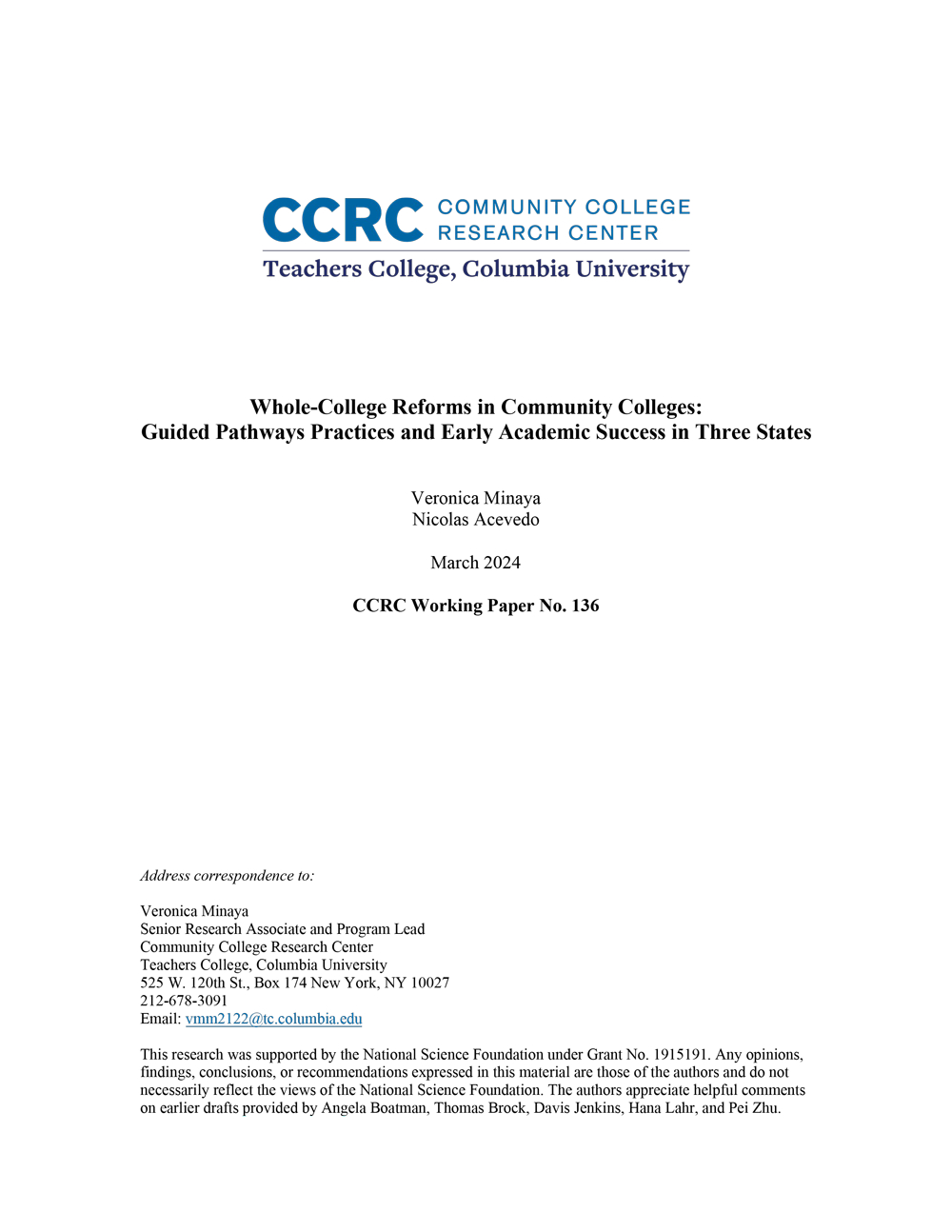
The guided pathways model, comprising 14 different practices, is a framework for comprehensive, whole-college reform undertaken by community colleges to help all students choose, enter, progress through, and complete a program of study that enables them to secure sustaining-wage employment or transfer with junior standing in a major. Since its introduction in 2015, it has been adopted by hundreds of community colleges across the United States. This paper asks whether guided pathways practices implemented at 62 community and technical colleges in three states—Tennessee, Ohio, and Washington—are associated with improvements in student outcomes during the first year of college. Using institutional survey and rich administrative data, the authors construct measures of adoption of guided pathways reforms to examine the association between guided pathways practices and fall-to-fall persistence, college credits earned in the first year, college math credits earned in the first year, and STEM credits earned in the first year.
The study reveals substantial variation in the adoption of guided pathways reforms across the states and across community colleges within the states over time. While the study cannot establish a causal relationship between guided pathways adoption and student outcomes, the authors find significant positive associations between the statewide adoption of guided pathways reforms and early student outcomes in Tennessee. The observed improvements in that state are likely the result of concurrent reforms—guided pathways and others—implemented simultaneously, rather than of guided pathways reforms alone. They do not find evidence of improved student outcomes in either Ohio or Washington following the launch of statewide guided pathways initiatives. The findings also suggest that complementarities among adopted practices within and across areas of practice—rather than the adoption of individual practices or the intensity of adoption—seem to drive larger improvements in early academic success across the three states.
